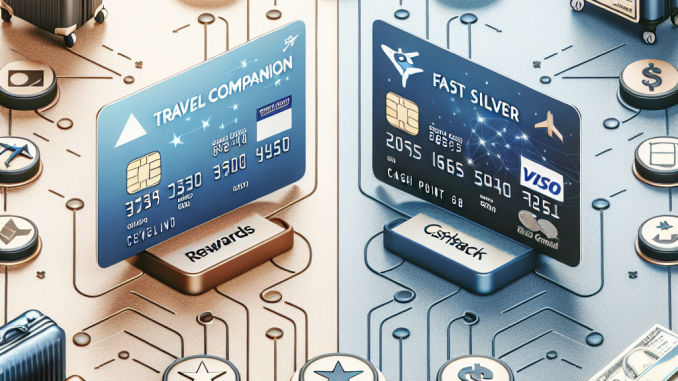
Essential Insights
Both the Capital One VentureOne Rewards Credit Card and the Capital One Quicksilver Cash Rewards Credit Card serve up solid perks without tagging on an annual fee. While VentureOne leans toward travelers seeking flexible mile redemption, Quicksilver appeals to straightforward cash-back fans craving a steady return on every purchase. Each card dishes out similar sign-up bonuses and zero-interest introductory offers, but their reward structures diverge in key ways.
Shared Features at a Glance
- No annual fees on either card
- Flat-rate rewards across all spending categories
- Generous welcome bonuses valued around $200
- Introductory 0% APR offers on purchases and balance transfers
Despite these parallels, the cards part ways in how they disburse rewards, with VentureOne opening more doors for travel-hungry users looking to squeeze extra value from miles.
Snapshot Comparison
| Welcome Bonus | 20,000 bonus miles after $500 spent within 3 months | $200 cash bonus after $500 spent within 3 months |
| Rewards Rate | 5X miles on hotels and rentals via Capital One Travel 1.25X miles on all other purchases |
5% cash back on hotels and rentals via Capital One Travel 1.5% cash back on all other purchases |
| Intro APR | 0% for 15 months on purchases (Variable APR 19.24%-29.24% after) | 0% for 15 months on purchases (Variable APR 19.24%-29.24% after) |
| Annual Fee | $0 | $0 |
Mid-Text Fact Insert
According to recent data, the average American household spends nearly $7,900 annually on dining and entertainment, making cash-back and travel rewards credit cards practical tools for maximizing everyday expenses.
Welcome Bonus: Neck-and-Neck
Whether you prefer snagging 20,000 miles or locking in a $200 cash bonus, both cards start you off on comparable footing after spending $500 within three months. VentureOne’s miles convert to roughly $200 when booking through its travel portal, while Quicksilver’s cash bonus puts the money directly in your pocket. Notably, miles can be transferred to various travel partners—an option cash back simply can’t offer—which may unlock greater travel value, albeit without guaranteed returns. For straightforward reward earnings, this category ends in a dead heat.
Rewards Rate: Quicksilver Takes the Lead
Interested in a steady cash flow from your everyday purchases? Quicksilver delivers a robust 1.5% cash back across the board, outpacing VentureOne’s 1.25% miles on general spending. To put it in perspective, $1,000 in spend nets you $15 back with Quicksilver, versus $12.50 worth of miles with VentureOne.
Quicksilver also dishes out a tasty 5% cash back on hotels and rental cars booked through Capital One Travel, perfect for occasional trips, although these earnings lack transfer options to travel partners.
On the flip side, VentureOne’s miles, when transferred to travel partners, hold an estimated value of 1.7 cents each. That means your 1,250 miles per $1,000 spent could be worth approximately $21.25—surpassing Quicksilver’s cash earnings for travelers willing to leverage transfer partners.
Fee Structure: A Draw
Both offerings maintain a clean slate with no annual fees and waive foreign transaction fees, making them equally wallet-friendly for purchases worldwide.
Introductory APR: Tied Again
Each card grants 0% interest on new purchases for the first 15 months, providing a breathing room period identical in length and conditions.
Which Card Racks Up More Rewards?
Imagine a four-person household — parents under 50 and kids aged 8 and 11 — spending on a moderate budget:
- Food expenses: $15,871 annually (~$1,322.60/month)
- Dining out: $4,800 annually ($400/month)
- Miscellaneous purchases: $12,000 annually ($1,000/month)
Total annual spend: $32,671
Estimated rewards for either card:
- VentureOne: Around $408 in travel-credited rewards
- Quicksilver: Roughly $490 in cash back
Why Opt for the Capital One VentureOne Rewards Card?
If jet-setting is your jam or you want to extract maximum juice from your miles through Capital One’s travel partners, VentureOne shines as the smarter pick. Here’s why:
Versatile Redemption Paths
Points earned with VentureOne can be cashed in as travel statement credits, transferred to a diverse lineup of airline and hotel partners for amplified value, or even used for Amazon and PayPal purchases—adding flexibility few cash-back cards boast.
Credit Score Range
Note that VentureOne typically welcomes applicants with a good to excellent credit spectrum, generally between 670 and 850 FICO scores, meaning some might find qualification a hurdle.
Why Choose the Capital One Quicksilver Cash Rewards Card?
Built for those craving straightforward cash back with a slightly juicier rate on everyday buys, Quicksilver packs perks beyond just rewards:
Extra Perks
- Interest-free window on purchases and balance transfers matching VentureOne’s 15 months
- Travel accident insurance coverage
- No foreign transaction fees, keeping international spending smooth
Rewards Redemption
Cash back can be claimed as mailed checks, statement credits, gift cards, or even used for Amazon and PayPal purchases—offering convenience and simplicity.
Credit Score Requirements
Much like VentureOne, Quicksilver favors applicants with solid credit, generally within the 670 to 850 range.
Final Thoughts
If you’re after miles and crave greater redemption versatility—especially for travel—VentureOne is your go-to. Alternatively, if a higher flat-rate cash back suits your spending style better, Quicksilver stands out.
Both cards excel in no-annual-fee rewards programs, but your ultimate choice hinges on whether flexible travel perks or straightforward cash returns top your priority list.